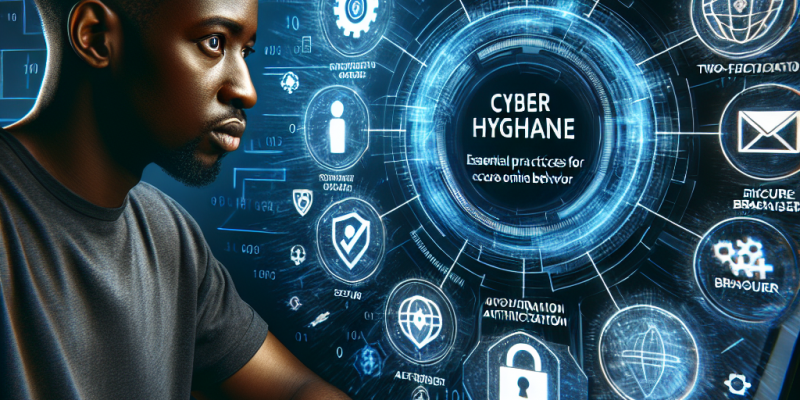Cyber Hygiene 101: Essential Practices for Secure Online Behavior

In our increasingly digital world, maintaining proper cyber hygiene is as crucial as washing your hands to prevent the spread of germs. Just as good hygiene practices keep us healthy, adopting secure online behaviors helps protect our personal information and digital identities from cyber threats. This article outlines essential practices for maintaining cyber hygiene, enabling you to navigate the internet safely and responsibly.
1. Strong Password Management
Create Strong Passwords:
A robust password is your first line of defense against unauthorized access. Use a combination of uppercase and lowercase letters, numbers, and special characters. Aim for at least 12–16 characters, and avoid using easily guessable information like birthdays or names.
Utilize a Password Manager:
With the multitude of accounts we manage, it can be difficult to keep track of complex passwords. A password manager securely stores and encrypts your passwords, allowing you to generate strong, unique passwords for each account without needing to remember them all.
Enable Two-Factor Authentication (2FA):
2FA provides an added layer of security by requiring a second form of verification in addition to your password, such as a code sent to your mobile device. This additional step makes it significantly harder for cybercriminals to gain access to your accounts, even if they obtain your password.
2. Stay Updated
Regularly Update Software and Devices:
Software developers frequently release updates to fix security vulnerabilities. Ensure that your operating system, applications, and devices (such as smartphones and routers) are updated regularly to protect against the latest threats.
Be Wary of Unsupported Software:
Using outdated or unsupported software can pose significant risks, as these programs no longer receive security updates. If you rely on specific tools or applications, verify their support status, and look for alternatives if necessary.
3. Phishing Awareness
Recognize Phishing Attempts:
Cybercriminals often use phishing techniques to trick individuals into providing personal information. Familiarize yourself with common phishing scams, which often come in the form of unsolicited emails or messages containing links or attachments.
Verify Sender Information:
Before clicking on any link or providing sensitive information, verify the sender’s identity. Hover over links to see the actual URL, and be wary of questionable email addresses that appear similar but differ slightly from legitimate sources.
4. Secure Connections
Use a VPN for Public Wi-Fi:
Public Wi-Fi networks can be a hotspot for cybercriminals. Using a Virtual Private Network (VPN) encrypts your internet connection, helping to protect your data from interception on unsecured networks.
Check for HTTPS:
Before entering sensitive information online, ensure the website’s URL begins with "https://" rather than "http://." The "s" indicates that the website is secured with encryption, making it a safer environment for sharing personal information.
5. Data Privacy and Sharing
Limit Personal Information Online:
Be mindful of the information you share on social media and public forums. Even seemingly innocuous details can be pieced together to build a profile that cybercriminals can exploit.
Review Privacy Settings:
Take the time to review and customize the privacy settings on your social media accounts and other online services. Ensure only trusted individuals have access to your personal information and activity.
6. Secure Devices
Use Antivirus Software:
Installing reputable antivirus software can significantly reduce the risk of malware and viruses infiltrating your devices. Set it to update regularly to ensure you are protected against the latest threats.
Lock Your Devices:
Always use a secure method to lock your devices, whether it be a strong PIN, password, fingerprint, or facial recognition. This precaution deters unauthorized access in case your device is lost or stolen.
7. Regular Data Backups
Backup Your Data:
Regularly back up important files to an external hard drive or cloud storage service. In the event of a cyber-incident or hardware failure, having backups ensures you can recover your data with minimal disruption.
Conclusion
Embracing good cyber hygiene practices is essential in today’s digital landscape. By implementing these essential tips, you not only protect yourself but also contribute to the overall safety of the digital community. Remember, staying vigilant and informed is key to navigating the online world securely. Your digital safety is in your hands—make the commitment to practice good cyber hygiene today!














